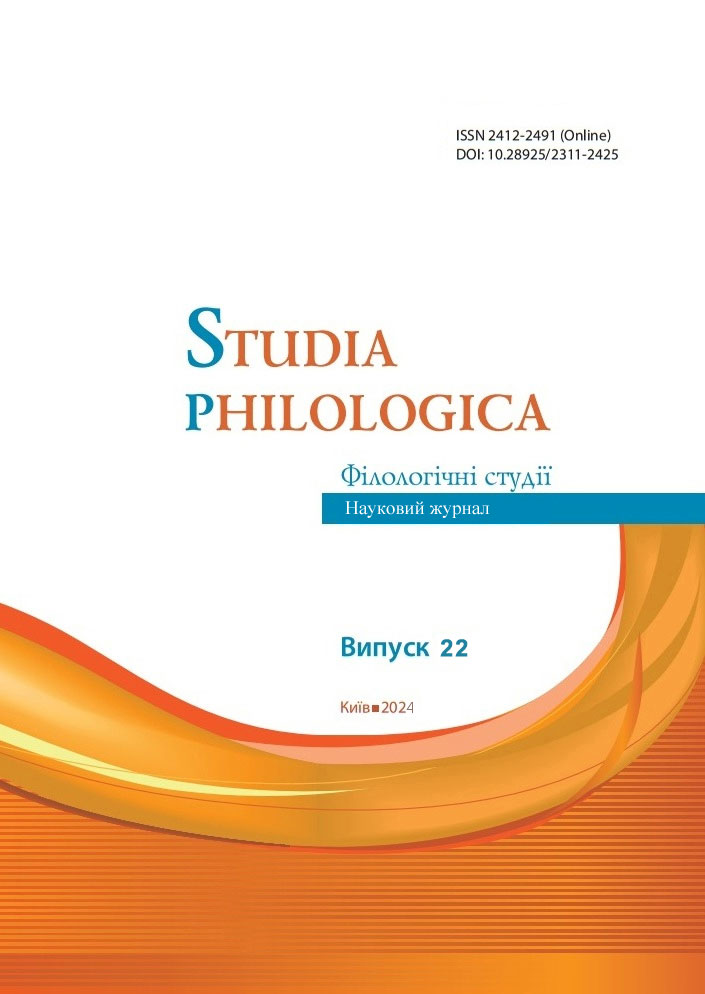Gift of the Hungarian Queen from Kyiv: Sword as a Metaphor
DOI:
https://doi.org/10.28925/2412-2491.2024.2211Keywords:
medieval, symbol, Rus’, sword, Hungarian Queen Anastasia, Holy Roman Emperor Heinrich IVAbstract
The article will analyze records in chronicles about usage of sword in medieval Rus’ in metaphorical context. Facts provided in the Tale of Bygone Years and the Radziwiłł Chronicle will be interpreted in connection with the record of Lampert of Hersfeld about the gift of the Attila’s sword, made by the Hungarian Queen Anastasia to Otto, Duke of Bavaria, in the second half of the 11th century, in order to interpret metaphorical meanings conveyed with the help of sword and explain the unusual ceremonial choice of the Hungarian Queen in view of her origin from Kyiv.
Downloads
References
Anonymus and Master Roger. (2010). Gesta Hungarorum and Epistle to the Sorrowful Lament upon the destruction of the Kingdom of Hungary by the Tatars (J. Bak & M. Rady, Trans.). Budapest, Central European University Press.
Carbon isotope studies confirm 11th century origin of some of bones excavated in Royal Crypt at Tihany Abbey. (2021, November 30). Hun-Ren, Hungarian Research Network. Retrieved March 30, 2024, from https://hun-ren.hu/en/news/carbon-isotope-studies-confirm-11th-century-origin-of-some-of-bones-excavated-in-royal-crypt-at-tihany-abbey
Carolla, P. (2019). “A Universal Narrative of Humanity”. Travelling to the “Other” from Constantinople: Priscus of Panion (5th c. CE) and William of Rubruk (13 c. CE). Medieval Worlds, Monasteries and Sacred Landscapes & Byzantine Connections, 9, 218-241. DOI 10.1553/medievalworlds_no9_2019s218
Codex Gertrudianus, Museo Archeologico Nazionale, Archivi e Biblioteca,
https://www.librideipatriarchi.it/en/books/egberts-psalter-codex-gertrudianus
Hazzard Cross, S. & Scherbowitz-Wetzor, O. P., Eds. and Trans. (1953). The Rusian Primary Chronicle, Laurentian Text. Crimson Printing Company. Cambridge, Massachusetts.
Hrushevsky, M.S. (1992). Istoria Ukrainy-Rusy. V.2. Kyiv: Naukova dumka. (in Ukrainian).
Hunt, L.-A. (1984). Comnenian aristocratic palace decoration: descriptions and Islamic collections. In Angold, M. (Ed.), The Byzantine Aristocracy 9th to 13th centuries. BAR International Series 221, 138-156.
Lamperti Annales (O.Holder-Edder, Ed.). (1894) In Lamperti Monachi Hersfeldensis Opera. Hannoverae et Lipsiae: impensis biblipolii Hahniani
Mielke, Ch. (2017). Every Hyacinth the Garden wears: the material culture of medieval queens of Hungary (1000-1395) [Doctoral dissertation, Central European University, Budapest]. DOI number: 10.14754/CEU.2017.06
Nickel, H. (1973). About a Sword of the Huns and the ‘Urepos’ of the Steppes. The Metropolitan Museum of Art Journal, 7, 131-142. Retrieved March 27, 2024, from https://www.metmuseum.org/met-publications/about-sword-of-the-huns-and-urepos-of-the-steppes-the-metropolitan-museum-journal-v-7-1973
Nikodem, J.A. (nd) Andrzej I (król Węgier 1046–1060). In Twojahistoria.pl Encyklopedia. Retrieved January 18, 2023, from https://twojahistoria.pl/encyklopedia/andrzej-i-krol-wegier-1046-1060/
Povist vremyanych lit. (1990). Yaremenko, V.V., Ed. and Trans. Kyiv, Pysmennyk. (in Ukrainian).
Radziwilliwskyi litopys, IX-XII st. (nd). Vernadsky National Library of Ukraine. http://irbis-nbuv.gov.ua/ulib/item/UKR0008287 (in Old Ukrainian)
Robinson, I.S. (2004). Henry IV of Germany 1156-1106. Cambridge University Press.
Schug-Wille, Ch. (1988). Byzanz und seine Welt. Naturalis Verlag.
The Fragmentary History of Priscus: Attila, the Huns and the Roman Empire, AD 430-476 (Christian Roman Empire Book 11) (2015). (J. Given, Trans.). Evolution Publishing.
Thietmari Merseburgensis episcopi Chronicon. Wattenbach, W. and Kurze, F. (Eds.) (1889). MGH Scriptores rerum Germanicarum in usum scholarum separatim editi 54. Hannoverae Impensis Bibliopolii Hahniani.
Yaremenko, V.V. (1990). Komentar do perekladu “Povisti vremyanykh lit”. In Povist vremyanych lit. (1990). (Yaremenko, V.V., Ed. and Trans.). Kyiv, Pysmennyk, 498-533. (in Ukrainian).
Ward, E.J. (2019) Child Kings and Guardianship in North-West Europe, c.1050 - c.1250. pp. In: Woodache, H., Dean, L.H.S., Jones, Ch., Martin, R.E. and Rohr, E., Eds. The Routlege History of Monarchy. (pp. 551-565). Routledge Taylor and Francis Group London and New York.
Zemplényi, L. (2023, July 26). The fascinating life of Anastasia of Kiev, Queen of Hungary. Hungarian Conservative. Retrieved March 29, 2024 from https://www.hungarianconservative.com/articles/culture_society/anastasia_of_kiev_queen_of_hungary_andrew_tihany_abbey_kievan_rus/
Published
How to Cite
Issue
Section
License
Copyright (c) 2024 CC BY 4.0 DEED Attribution 4.0 International

This work is licensed under a Creative Commons Attribution 4.0 International License.


